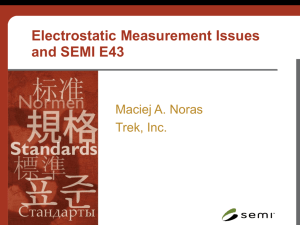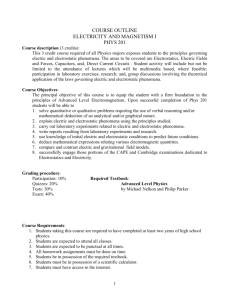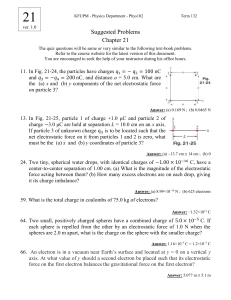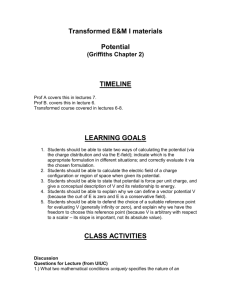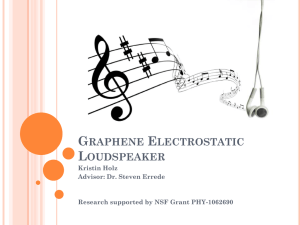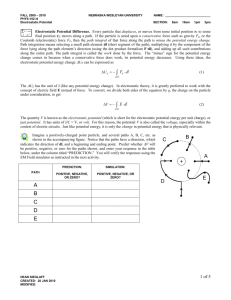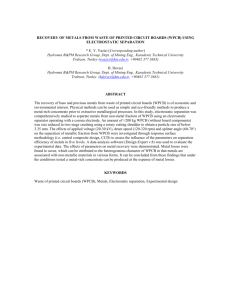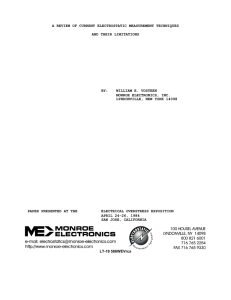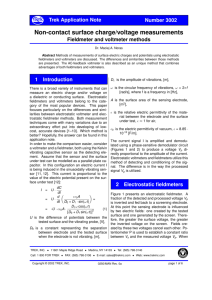Electrostatic Measurement Issues and SEMI E43
advertisement
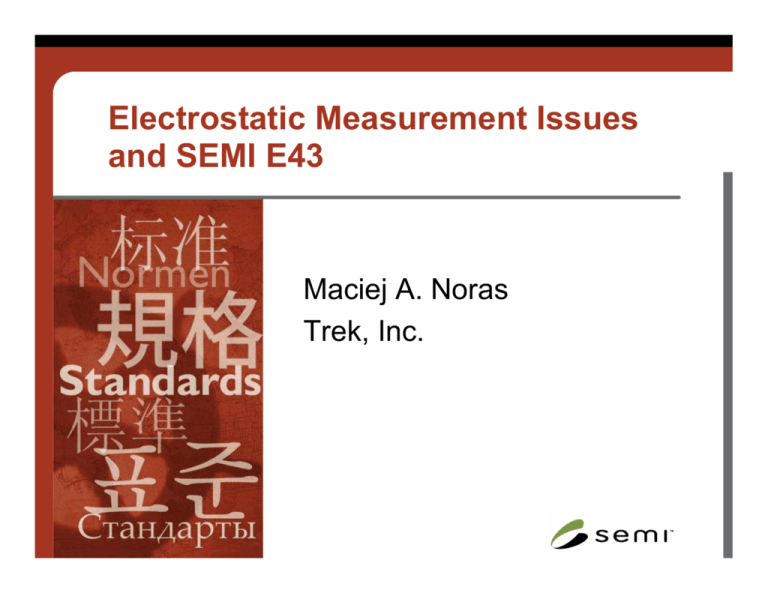
Electrostatic Measurement Issues and SEMI E43 Maciej A. Noras Trek, Inc. Overview • General comments on electrostatic measurements and measurement methods. – – – – Charge, voltage and electric field Measuring charge - coulombmeter and Faraday cup Measuring voltage - electrostatic voltmeters Measuring electric field - electrostatic fieldmeters • Review of E43 - 0301 – what it contains – what areas are in need of review and additions – what has been done so far Why measure charge? • Charge measurement may serve as semiconductor characterization tool (work function of materials, mobile charge density, doping density, etc.) • Measurements in semiconductor manufacturing: – Electrostatic discharge (ESD) hazard detection • integrated circuits, reticles Why measure charge (cont.)? – ESD may also cause an electromagnetic interference (EMI) problems • Equipment process interruption – Prevent contamination via electrostatic attraction • Wafers, flat panel displays (FPD) – Restrict damage due to field induced migration of material • Wafers • Reticles How to measure charge? • Measurements in electrostatic systems require very high input impedance of the measuring instrument: – Charge is limited, – Electrical state of the measured object has to be preserved. • Input impedance of the meter has to be much higher than that of the object being measured. Instrument probe Q, C are fixed Electrically isolated object High input impedance techniques • Non-contacting methods: – Lack of physical contact assures that the input impedance is high – Instruments: • The Faraday cup (pail) with a coulombmeter, • Fieldmeters, • Induction probes, • Electrostatic voltmeters • Contacting methods: – Electrometers +Q C -Q + Preamplifier Probe Guard Isolated surface Charge measurement techniques in E43 - Coulombmeter – Technique allowing for direct measurement of the charge – use of coulombmeter/electrometer – Not always convenient and/or feasible – Measures the net charge Q = C ⋅V Fieldmeter measurements – – – – – Measures electric field E Need to know the object-to-ground capacitance C Charge Q can be calculated Spatial resolution not too good Arc-over hazard if the meter is too close to the measured object Q = C ⋅E ⋅d Fieldmeter measurements, cont. – If the capacitance is not known, the surface charge still can be theoretically approximated (assuming uniform 2ε 0 ⋅ E ⋅ A distribution): Q= ⎛ H ⎜1 − ⎜ 2 2 d R H + ⎝ fieldmeter sensor H surface area A "seen" by the sensor surface under test 2R ⎞ ⎟ ⎟ ⎠ Fieldmeter measurements, cont. fieldmeter may distort the original electric field Electrostatic voltmeter measurements – Measures voltage, not field. Field can be calculated, if necessary – Good spatial resolution – No arc-over hazard, the sensor is at the potential of the measured surface Q = C ⋅V Electrostatic voltmeter measurements, cont. probe V=Vsurface=Vprobe C2 Q V= C1 + C p Cp surface under test C1 Electrostatic voltmeter measurements, cont. Comments on field and voltage measurements Table 1 – Recommended Equipment Electrostatic Levels Year Node 2000 180 nm 2002 130 nm 2003 100 nm 2004 90 nm 2006 70 nm 2007 65 nm 2009 50 nm 2010 45 nm 2013 32 nm 2015 25 nm 2018 18 nm Electrostatic Discharge, nC Electrostatic Field, V/cm V/inch 2.5–10 200 500 2.0 150 375 1.5 125 300 1.0 100 250 0.6 80 200 0.5 70 175 0.3 55 140 0.25 50 125 0.125 35 88 0.08 28 70 0.04 20 50 • Recommended equipment electrostatic levels in E78 are based on 10 pF capacitance Proposed changes to E43 • Change in the title and scope (much broader: electrostatic measurements instead of electrostatic charge measurements) • New section added: “Electrostatic discharge measurements” – Describes methods and instrumentation for the discharge measurements • Structure changes, i.e. “Performance verification” of instrumentation moved to “Measurement” section • New related information sections with examples Related information – new additions • Electric field, voltage and charge – discussion of generalized cases for the charge, electric field and voltage measurements on flat surfaces – advantages and disadvantages of each of the test methods • Correlation between electric charge, electric field, and electric potential – basic information on dependencies between field, voltage and charge Conclusions • E43 should become a charge measurement guide referenced by other SEMI standards (E78, E129). • Your feedback in that matter is very much needed and appreciated! • Please participate in the E43 review process, meeting of the EOS/ESD TF on Tue., March 6th, 1:30-4:30 p.m.
